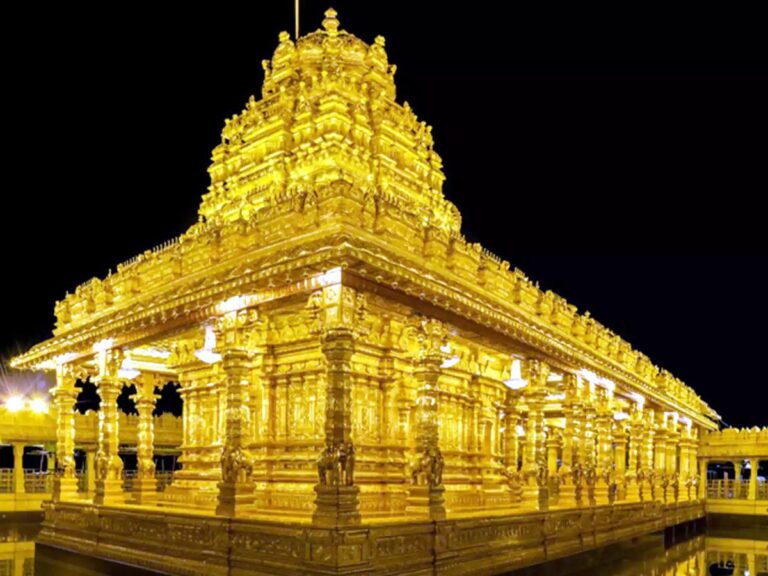Magnificent Ramanathaswamy Temple: A Marvel of Architecture
Ramanathaswamy Temple is one of the twelve Jyotirlingas located in Tamil Nadu, India on the island of Rameshwaram. In another name it is also known as Rameshwaram temple. The three most revered saints in the history who sang about the grandeur of this temple are Sundarar, Appar and Tirungnana Sambandar. Amongst Hindu temples the Ramanathaswamy temple is to be particularly remembered for its longest corridor of any temple.
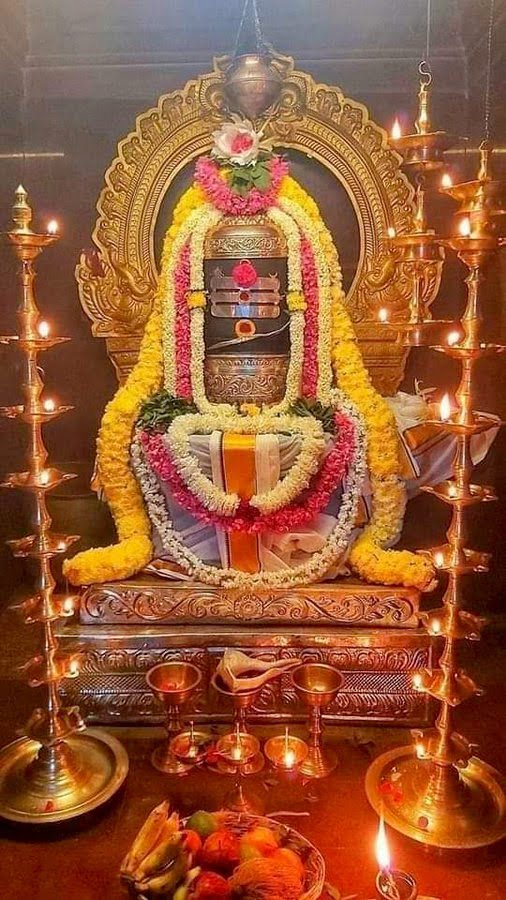
Contents
Legend of Ramanathaswamy Temple:
According to Ramayana, Lord Rama killed the demon king during the battle. Since Ravana is also known for his knowledge hub and has Brahmin genes, Lord Rama felt that he committed sins during the battle. In order to absolve sins, he wanted to pray to Lord Shiva and directed Hanuman to bring the largest lingam from the Himalayas. Since it had started to get dark, Sita (the wife of Lord Rama) made a linga of sand as Hanuman was unable to make one in time.
Lord Rama was about to complete his puja with the linga when Hanuman came along with a big linga. Hanuman desired to substitute the linga of sand with the one he had purchased from the Himalayas with his tail but could not do so. Since it was prayed by Sri Rama, taking the bath in Danushkoti, it is called “Ramalingam”. He asked Hanuman to place the Vishwalingam Lingam on the north side of Ramalingam and ordered devotees to worship Vishwalingam Lingam first and then to Ramalingam.
This is said to be the 12th century edifice of the Pandya dynasty. Thereafter, it was improved and re-established by many other kings, such as the Cholas, the Vijayanagara Empire, and Sethupathi dynasty.
Of the twelve Jyotirlinga temples, Ramanathaswamy Temple is one of the fifty two where Lord Shiva is worshipped in his purest form. It is also counted among the 275 Paadal Petra Sthalams, temples held sacred by Nayanars: Shaivite poet-saints.
The Ramanathaswamy temple is a huge structure, boasting more than 1200 pillars in a huge corridor. Moreover, the temple houses an enormous sanctum sanctorum in which both the lingams are worshipped.
One of the most renowned pilgrim centers in Hindus’ book is the Ramanathaswamy Temple. The Karthika month of October and November assume big significance in this regard when millions of devotees throng the temple for the sacred dip in the sea.
Read More>> Aundha Nagnath Temple: 8th Jyothirling with Divine Serpents

Significance of Ramanathaswamy Temple Rameshwaram:
Such importance Ramanathaswamy Temple carries. First and foremost, it finds mention to be where Lord Rama worshipped Lord Shiva before he built the Rama Setu to cross into Lanka and rescue his wife Sita. Second, in this temple is found the world’s largest lingam, said to be installed by Rama himself. There are also 22 holy wells called theerthams inside the temple complex believed to have medicinal virtues.
Some specific advantages of visiting Ramanathaswamy Temple includes:
- When the devotees visit the temple and worship Lord Shiva, it is believed that it releases them from all kinds of bad actions and helps them attain moksha, or one attains freedom from the cycle of birth and death.
- The 22 theerthams inside the temple complex are said to have healing capabilities for most diseases.
- The temple is a great place of spiritual energy. Most of the devotees may come out feeling peaceful and tranquil while coming to the temple.
- It is also a beautiful and historic structure. It is then very much conducive as a place to learn from about Hindu culture and architecture.
Read More>> Grishneshwar Temple: Wealth and Pleasure at Shiva’s Feet
Architecture of Ramanathaswamy Temple Rameshwaram:
Gopurams or Gateway Towers: There are very ornate gopurams or gateway towers in the temple complex. Such gateway towers are characteristic of the Dravidian period and are adorned with vivid sculptures of gods and goddesses and ornamented structures. There are quite a few such towers, and the largest is on the eastern side.
Corridors: The temple is believed to have the longest corridors in India associated with temples, containing about 1212 intricately carved pillars. These are the “prakarams,” which serve as a place for circumambulation or a circumambulating of the sanctum sanctorum, and are richly ornamented with art in their enrichment.
Mandapams: The temple owns hundreds of mandapams or halls. The most famous mandapam is the hall of 1000 pillars. As the name itself, it speaks about pillaring it with carvings everywhere on the pillar. All are different types and are depicting myths and gods.
Sanctum Sanctorum: Sanctum Sanctorum is the inmost temple where the principal deity of the temple, Lord Ramanathaswamy in the incarnation of Lord Shiva, lies. Lingam is worshipped here because it is taken to be an abstracted form of Lord Shiva. It is a sole stone as the sanctum and is believed to be sanctified by no less than Lord Rama himself.
The temple is heavily using corbelled arches, which, in itself, is one of the most basic features of the Dravidian architecture style. It helps improve the strength of the structure and gives it a unique look.
Then, of course, there is the Dravidian Style that the Ramanathaswamy Temple portrays, with pyramidal towers in design, sculpted decorations, and unbounded open spaces for congregational activity. It is a style that dominates most South Indian temples and which has been observed in particular because of its grandeur and also intricate craftsmanship.
Sculptures and Carvings: One can see genuine craftsmanship and richness of their skillset by looking at the sculptures of Thousands of gods and goddesses with detailed carvings of Hindu epics in the form of episodes.
Agnithirtha: It is located next to the sea and the holy bathing ghat called Agnithirtha, where worshippers bathe ritually before making offerings of their prayers in the temple. Even inside the campus of the temple there is a shrine for Goddess Parvati.
Read More>> Sri Puri Jagannath Temple: The Lord of the Universe
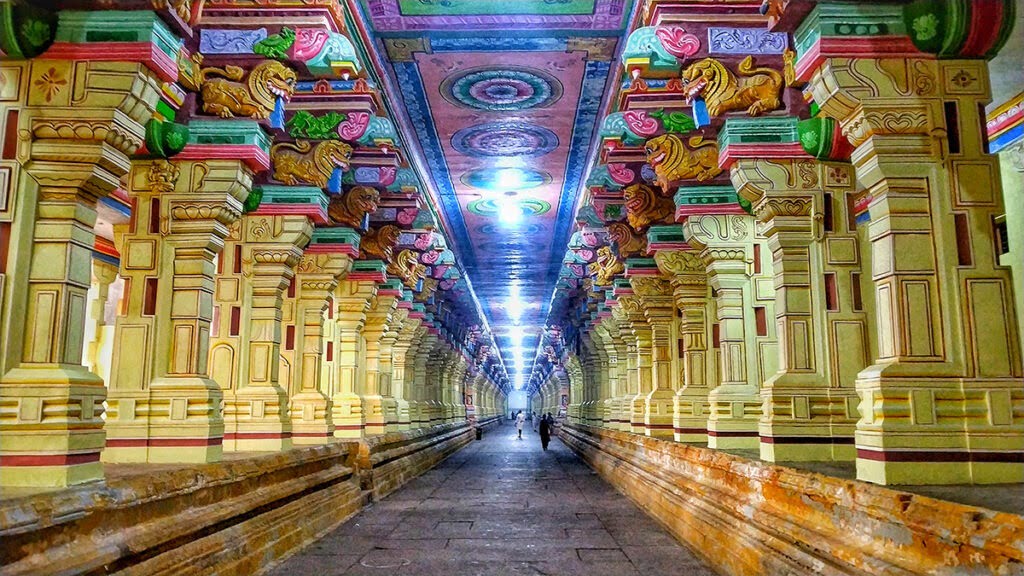
Rameshwaram Temple Timings:
Temple Timings:
- Generally, the temple remains open between 6:30 PM and 7:00 PM. Though on certain days, it varies a bit.
- To get the latest timing, kindly refer to the temple website or ask the local authorities before your visit.
Some Important Rituals:
The temple conducts various pujas (prayers) throughout the day. Here are a few notable ones:
- Palliyarai Deepa Arathana (Morning Wake-up Aarti): This puja happens at 5:00 AM.
- Spadigalinga Deepa Arathana (Sphatik Linga Aarti): This aarti for the crystal lingam is performed at 5:10 AM. Keep in mind this might have specific timings or limited access.
- Thiruvananthal Deepa Arathana (Lord Ananda Deep Aarti): This aarti is at 5:45 AM.
- Vila Pooja: This puja happens at 7:00 AM.
- Kalasanthi Pooja (Kala Shanti Pooja): This puja for peace occurs at 10:00 AM.
- Uchikala Pooja (Midday Offering): This midday offering happens at noon.
- Palliyarai (Sayanangriha) Procession and Pooja: This evening procession and puja for the deities takes place between 8:45 PM and 9:00 PM.
Official Website:
Arulmigu Ramanathaswamy Temple
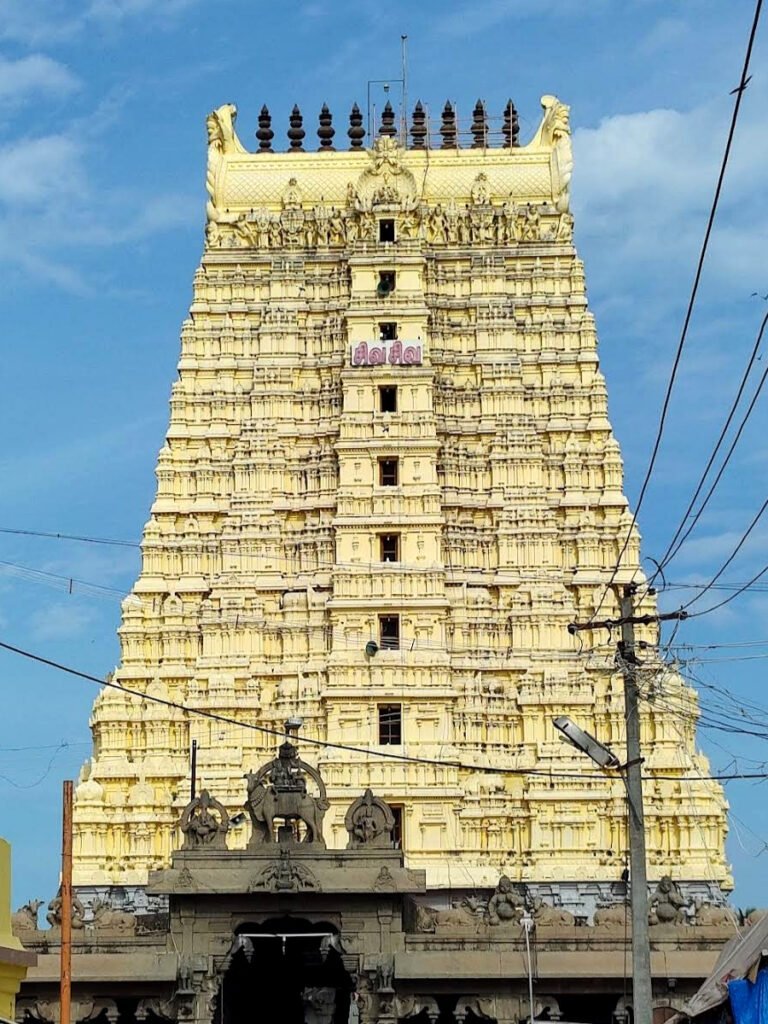
Places to visit near Ramanathaswamy Temple Rameshwaram:
- Agni Teertham: This is the major seashore where the pilgrim takes the ritual bath before entering the temple. Agni Teertham is among the activity areas for spiritual activities and to see a sunset.
- Dhanushkodi: On Pamban Island’s southeast tip is named as Dhanushkodi also known as the ghost town. It provides ethereal vistas with destroyed structures and pristine beaches. It is an important historical site because it has been related to Ramayana.
- Gandhamadhana Parvatham: It is believed that Lord Rama has made the plea for the antidote of his wife Sita at this hillock. It offers a beautiful panorama of the island as well as the nearby islands Rameswaram.
- Kothandaramaswamy Temple: This temple is a part of the Ramayana, and it is situated nearly 12 kilometres distance from Rameswaram. It houses art murals with glazed work depicting scenes from the epic, which are simply beautiful.
- The Pamban Bridge is one of the most impressive railway bridges which links Pamban Island town, Rameswaram with Mandapam on mainland India. The Pamban bridge was thrown open on February 24, 1914, and was a first as it remained India’s first sea bridge till the Bandra-Worli Sea Link opened in 2010.
- Adam’s Bridge (Rama’s Bridge): The shoal chain is intended to be the surviving remnants of the bridge constructed by the monkey army of Lord Rama to pass over Lanka. This site is important both historically and geologically.
- Rama Teertham: It is believed to be the temple and water tank constructed by Lord Rama while searching for Sita. Its just 7 km from the town.
- Kalam National Memorial: A memorial/ museum dedicated to the former President of India, Dr. APJ Abdul Kalam. He is native to the Rameswaram town. One can find here leftovers of his life, achievements and contributions to science and technology.
- Villoondi Theertham: One of the Holy tanks lies 6 kilometers north of Rameswaram. According to legends, one day, he stuck an arrow in the ground to quench the parched throats of his thirsty soldiers and pulled up one tiny droplet of sweet water.
- Five-faced Hanuman Temple: In the town of Rameswaram is the five-faced Lord Hanuman Idols. It serves one of the grand centers of pilgrimage and a holy location for worship and to develop devotion.
Read More>> Lalita Devi Temple Naimisharanya
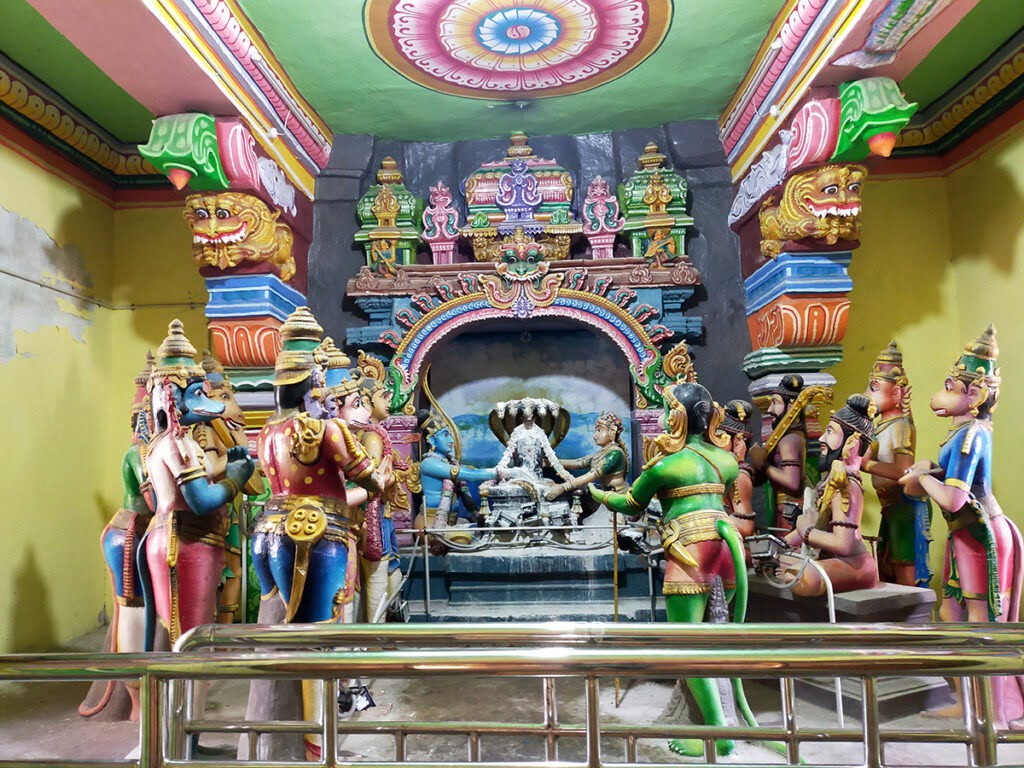
How to reach Ramanathaswamy Temple Rameshwaram:
By Train:
Nearest Railway Station: Rameswaram Railway Station.
Distance: 2 kilometers away from the temple.
By Air:
The nearest airport: Madurai Airport.
Distance: approx. 174 kilometers
Time taken to reach the temple: 3-4 hours.
By Road:
Rameswaram has excellent road access to several areas in Tamil Nadu.



